Although both FTP and SFTP focus on data transfer, SFTP is more suited to combat current cybersecurity threats. SFTP uses SSH (Secure Shell) encryption to safeguard data transfers, whereas FTP lacks such protections. Consequently, enterprises must adopt FTP and SFTP security procedures. Organizations cannot afford to be lax in dealing with security threats, as data is a vital resource. Proper precautions must be taken to prevent data breaches and other dangers during internet-based data transfer.
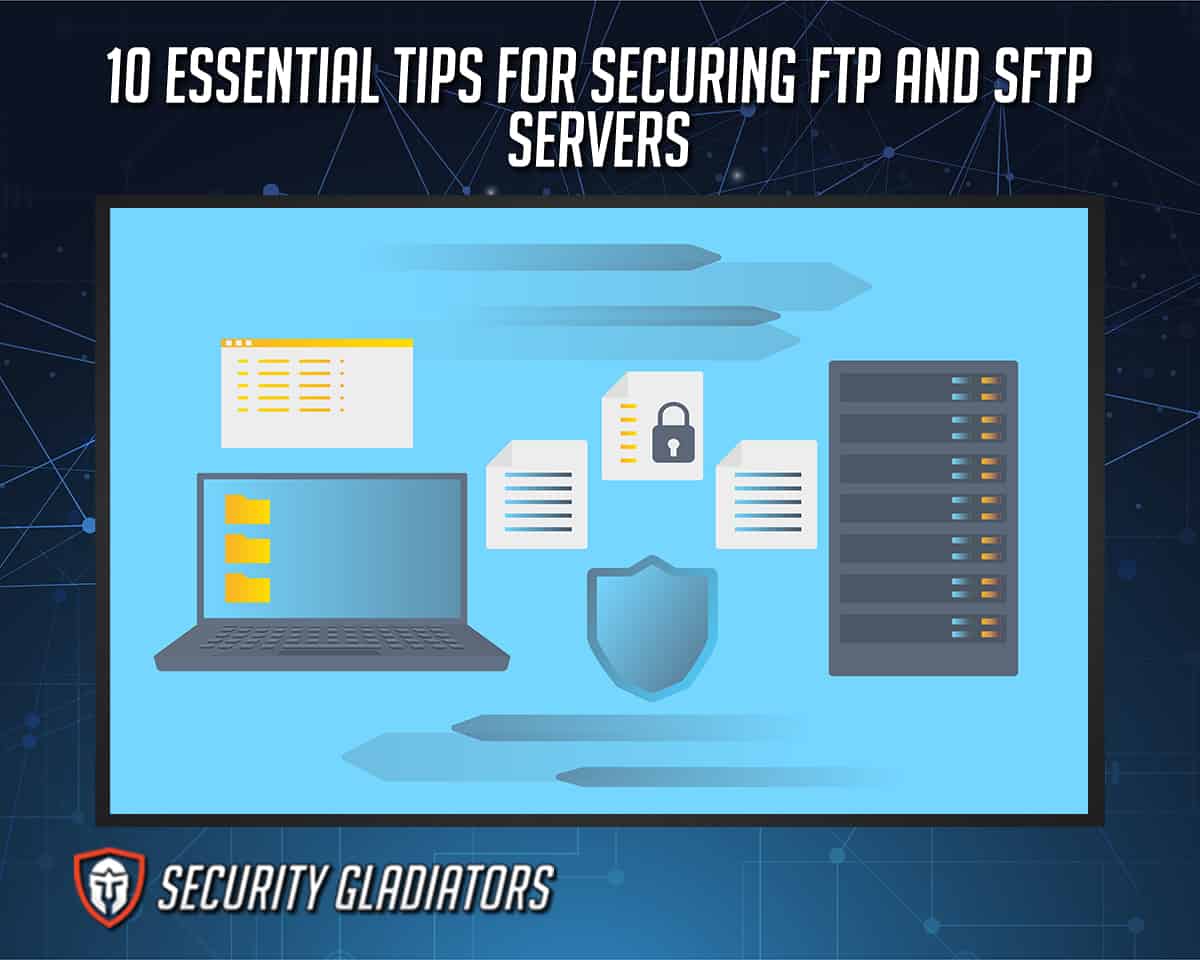
The 10 essential tips for securing FTP and SFTP servers are listed below.
- Disable standard FTP
- Use strong encryption and hashing
- Place behind a secure gateway
- Implement IP blacklists and whitelists
- Harden your FTPS server
- Utilize good account management
- Use strong passwords
- Implement file and folder security
- Lock down administration
- Keep the FTP and SFTP server software updated
Table of Contents
1. Disable Standard FTP
FTP was developed in the 1970s to satisfy the requirements of computer users at the time. FTP lacks security and can expose organizations to data loss and other hazards; therefore, businesses must upgrade to the secure version of FTP. Amid continuous technological advancements and emerging cyber threats, FTP might not be a suitable solution for meeting the needs of modern computers.
2. Use Strong Encryption and Hashing
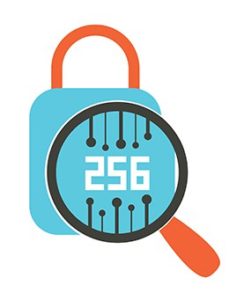
Any company that handles data must regularly improve data storage and transfer mechanisms. Encryption algorithms such as RSA and DES are insufficient to fight current internet security threats. Therefore, businesses adopting outdated encryption systems must upgrade to the latest version that is not susceptible to manipulation by hackers.
Similarly, the old version of the hash should be updated to the most recent version, such as from SHA-1 to SHA-2. SHA was designed to employ a 160-bit encryption length to secure data, but SHA-2 uses a 256-bit key length. Accordingly, SHA-2 is more robust and will provide greater security.
3. Place behind a Secure Gateway

Using a secure gateway for file transfer ensures any third party that’s granted access to files or data will interact solely through the gateway. The gateway also interacts with the FTP server through the private network on the sender’s behalf.
When organizations implement a secure gateway for data transfer, a data breach can be avoided or reduced. Additionally, the secure gateway filters activity flowing through the system to prevent unidentified traffic.
4. Implement IP Blacklists and Whitelists
IP blacklists block specific IP addresses from accessing a system, but IP whitelists grant access to particular IP addresses. With whitelists, business partners’ IP addresses can be granted access to a file, whereas other IP addresses can be blocked to restrict users’ access to data.
Note:
However, this strategy works well for business partners and staff with fixed IP addresses.5. Harden Your FTPS Server
A File Transfer Protocol Secure (FTPS) server is a secure variant of FTP. FTPS supports TLS and SSL to enhance data transfer security.
There are various techniques for securing FTPS servers to achieve the best possible results aligned with organizational objectives. Some methods for hardening FTPS servers include updating FTPS servers to the most recent version of TLS, securing the data channel, scanning for viruses, encrypting data at rest, employing multi-factor authentication and monitoring file access.
6. Utilize Good Account Management
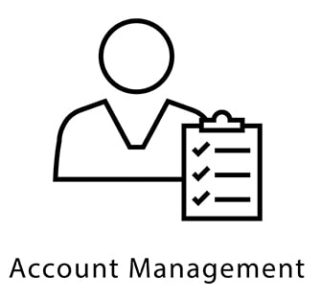
Good account management requires a concise understanding of creating access for third parties or business partners and maintaining user accounts safely. Due to security concerns and a decrease in network traffic, effective account management should restrict user access to certain information.
Client credentials for FTP and SFTP should be separate. In addition, avoid using anonymous accounts and creating shared accounts with external bodies. Account administrators must establish a closure time frame for failed login attempts and prolonged periods of inactivity.
7. Use Strong Passwords
The adoption of strong passwords is a widespread cybersecurity practice. The rationale is that strong passwords are complex for attackers to hack or decipher. A strong password contains numbers, lowercase and uppercase letters, and special characters. Additionally, individuals should avoid using common or easily guessed phrases as passwords.
Pro Tip:
Maintain a habit of changing administrative passwords every three months or 90 days. Organizations must guarantee that the last four characters of a password are never reused. Additionally, passwords should be stored using a robust and up-to-date hashing algorithm.8. Implement File and Folder Security
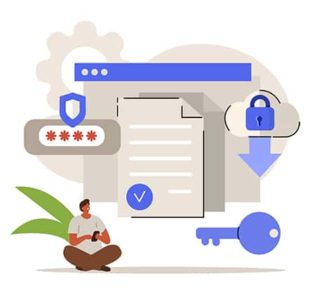
File and folder security is an efficient means for enterprises to achieve data protection. A well-managed account is one method for achieving file and folder security. Organizations should encrypt data at rest so that hackers cannot decipher or access the contents in a security breach. Additionally, only the necessary files should be accessible to third parties and business partners.
For example, if a client simply needs access to view a file, the client’s permissions should not include the option to alter the file or the entire folder. Allow access mainly depending on what is required.
9. Lock Down Administration
By securing administration control over files, only the necessary and appropriate staff members can access the organization’s data and passwords. In recent years, hackers have exploited social engineering, phishing and human error to compromise countless companies. Passwords should only be accessible to personnel with security awareness.
In terms of data security, human error can also be unavoidable. Therefore, organizations should implement multi-factor authentication to bolster login security and use an Active Directory (AD) domain to store passwords.
10. Keep the FTP and SFTP Server Software Updated

Most of the time, application or software developers provide regular updates to enhance performance and patch any vulnerabilities in older versions. As a result, businesses should frequently update the FTP and SFTP server software. Using obsolete software is as risky as allowing burglars access to a company’s assets.
Organizations must keep an eye out for product updates and investigate the specifics to accomplish data security. Software updates for FTP and SFTP enhance data protection and render decryption impossible for cybercriminals.
What are the Best FTP and SFTP Servers?

As companies deal with data transfer regularly, diverse data transfer protocols are available on the market to satisfy various requirements. The SolarWinds SFTP server, FileZilla server and IIS FTPS server are among the best FTP and SFTP servers.
Each server possesses its own set of characteristics for ensuring the security and efficiency of internet-based data transfer. SolarWinds SFTP, for example, can facilitate the transfer of up to 4 GB of data across several devices simultaneously. SolarWinds SFTP is a free server suitable for transferring operating system upgrades.
IIS FTPS’s functionality is also unique compared to other products. Various benefits are associated with using the server, including compatibility with the most popular platforms, browser integration and dependability.
Other FTP and SFTP servers are available, which include Couchdrop, Livedrive and CrushFTP.
What is the Most Proper Tip that Addresses and Prevents the Occurrence of Data Breaches?
The most proper tips that address and prevent the occurrence of data breaches include adopting a dependable security system, limiting user access to data and keeping tabs on updates. Data is vital to an organization’s overall performance. Likewise, fraudsters target corporations for sensitive information. To prevent data breaches, individuals must avoid and restrict any potential method that hackers can use to access data.
How to Test the Security of FTP and SFTP Servers?

Individuals can test the security of FTP and SFTP servers to confirm and validate the connection status. However, testing approaches are reliant on the user’s device. People need a test file to test the SFTP connection and a third-party source for a command line to test on Windows.
Using the third-party application PuTTY for this test, users can download and install the SFTP client on the desktop and prepare a test HTML file for uploading. Copy this code: “body > p>” This file is used during SFTP testing. “/p> /body>” into a text file. Then, save the text file to the desktop as “test.htm.” Start PuTTY, psftp.exe, from the desktop and verify that the file was successfully pasted.
What are the Practices that Help in Securing Your FTP and SFTP Servers?
The practices that help in securing FTP and STP servers are listed below.
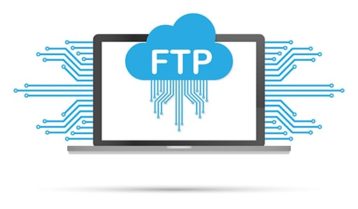
- Watch out for brute-force attacks.
- Scan every file for viruses.
- Implement encryption for data at rest.
- Disable Standard FTP.
- Use strong encryption and hashing.
- Place behind a secure gateway.
- Implement IP blacklists and whitelists.
- Implement multi-factor authentication.
- Harden your FTPS server.
- Utilize good account management.
- Use strong passwords.
- Implement file and folder security.
- Lock down the administration platform.
- Keep the FTP and SFTP server software up-to-date.

